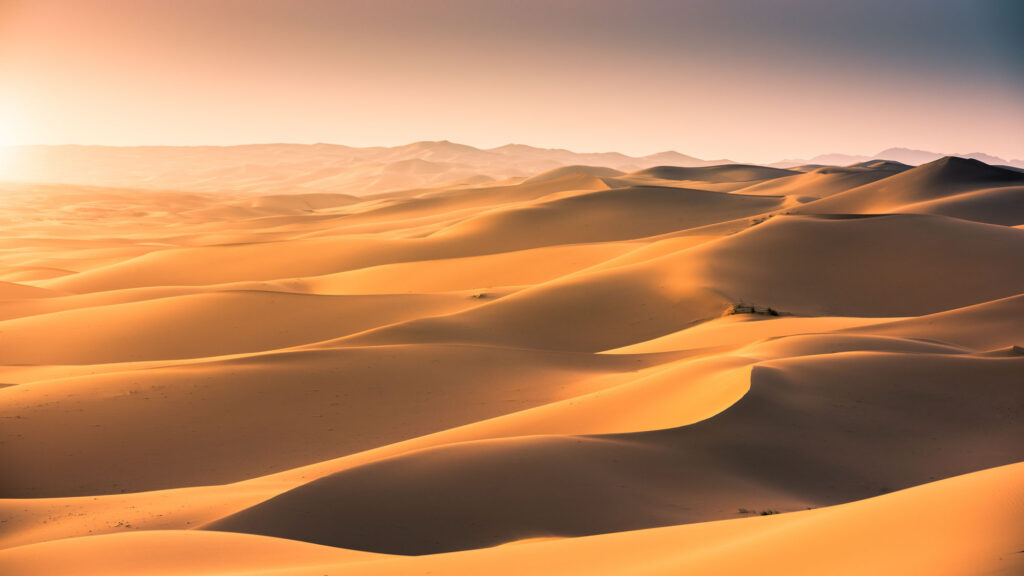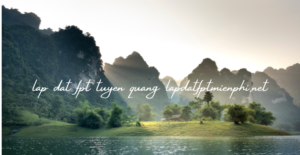Exploring the Largest Desert in Asia: A Journey Through Vast Sands
When you think of the largest desert in Asia, what comes to mind? The answer is the Arabian Desert! This massive expanse of sand is not only the largest desert in Asia but also one of the biggest deserts in the world. Spanning over 2.3 million square kilometers, the Arabian Desert covers much of the Arabian Peninsula.
But the Arabian Desert is not the only huge desert in Asia. From the icy landscapes of the Gobi Desert to the mysterious shifting sands of the Taklamakan Desert, Asia is home to several impressive deserts. Each of these deserts has its own unique features and stories, making them fascinating places to explore.
What is the Largest Desert in Asia?
The largest desert in Asia is the Arabian Desert. Covering a huge area of about 2.3 million square kilometers, it’s the biggest desert on the continent. This vast expanse of sand stretches across several countries, including Saudi Arabia, Yemen, and Iraq.
In this desert, you’ll find some of the hottest temperatures in the world. During the day, the heat can become extreme, often reaching over 50°C. The Arabian Desert is a key part of Asia’s geography, influencing climate and weather patterns in the region.
Not just sand, the Arabian Desert also has mountains and plateaus. Riyadh, the capital of Saudi Arabia, sits right in the middle of this giant desert. Despite its harsh conditions, the desert supports various wildlife adapted to the extreme environment.
The Arabian: Largest Desert in Asia
The Arabian Desert is well-known as Asia’s biggest desert. It covers an enormous space, making it a key feature of the continent’s geography. This desert extends from the Persian Gulf in the east to the Red Sea in the west.
Life in the Arabian Desert is tough due to the extreme heat and lack of water. However, several animals and plants have adapted to these conditions. Species like the Arabian Oryx and Fennec Fox are specially adapted to survive in such a dry environment.
The desert is also rich in cultural history. Ancient trade routes once crossed the Arabian Desert, connecting different civilizations. Today, it remains a place of historical significance and natural beauty.
Exploring the Vastness Largest Desert in Asia
Exploring the vastness of the Arabian Desert is an unforgettable experience. This desert stretches across multiple countries, making it a major landmark in Asia. The sheer size of the desert can be awe-inspiring.
Travelers to the Arabian Desert will see endless sand dunes and rocky plateaus. The desert’s landscape is constantly changing due to the wind, which shapes the dunes and creates new patterns. It’s a dynamic environment that offers a new view every day.
In addition to its natural beauty, the Arabian Desert is home to a few oasis towns. These green spots are vital for the people and animals living in the desert. They provide much-needed water and a place for life to thrive.
Why is the Arabian Desert the Largest Desert in Asia

The Arabian Desert is the largest desert in Asia due to its immense size. Covering over 2.3 million square kilometers, it holds the title of the biggest desert on the continent. Its size is unmatched by any other desert in Asia.
The desert’s size affects the climate of the region, making it extremely hot and dry. The vast area means that temperatures can become very high, especially during the summer months. This makes the Arabian Desert one of the hottest places on Earth.
Its large size also influences the wildlife that lives there. Only certain animals can survive the extreme conditions. Adaptations such as thick fur and the ability to go without water for long periods help these animals live in such a harsh environment.
Discovering the Gobi Desert: Largest Desert in Asia
The Gobi Desert is Asia’s cold desert and is known for its unique climate. Unlike the hot Arabian Desert, the Gobi Desert experiences extreme temperature changes between summer and winter. It can get very cold in winter, with temperatures dropping to -40°C.
Located in northern China and southern Mongolia, the Gobi Desert is surrounded by mountains. These mountains help to shape the desert’s climate and contribute to its cold conditions. The Gobi Desert is not only cold but also dry, with little rainfall throughout the year.
Despite the harsh climate, the Gobi Desert is home to a range of animals adapted to the cold. Species like the Bactrian camel and snow leopard can thrive in this chilly environment. Their ability to endure the cold makes them special residents of the Gobi Desert.
The Largest Desert in Asia: A Unique Cold Desert in Asia
The Gobi Desert stands out as a unique cold desert in Asia. Unlike other deserts that are known for their heat, the Gobi Desert is characterized by its cold temperatures. This desert experiences severe winters, with temperatures dropping well below freezing.
Located between China and Mongolia, the Gobi Desert has a diverse landscape. From sand dunes to rocky plains, the desert’s terrain is varied and interesting. The high altitude of the Gobi Desert contributes to its chilly climate and wide temperature swings.
The Gobi Desert has historical importance as well. It was part of the ancient Silk Road, a major trade route connecting East and West. Many travelers and traders passed through the Gobi Desert, adding to its rich history.
What Makes the Gobi Largest Desert in Asia Special
What makes the Gobi Desert special is its extreme climate and rich history. Unlike other deserts, the Gobi Desert has very cold winters, with temperatures that can plummet to -40°C. This unique climate sets it apart from the hotter deserts in Asia.
The Gobi Desert also has a diverse landscape, including sand dunes, rocky plateaus, and vast plains. These varied features create a unique environment for wildlife and plants adapted to the cold. For instance, the Gobi Desert is home to rare species like the Gobi bear and wild Bactrian camels.
In addition to its natural features, the Gobi Desert has historical significance. It was a key part of the Silk Road trade route, which connected different cultures and civilizations. This historical connection adds to the desert’s importance and charm.
Karakum Desert: Largest Desert in Asia Hidden Gem
The Karakum Desert is Asia’s hidden gem, often overshadowed by larger deserts. Located in Turkmenistan, this desert covers about 350,000 square kilometers. It’s a significant part of the region’s landscape, even though it’s not as well-known.
In the Karakum Desert, the climate is harsh but interesting. Summers are extremely hot, while winters can be surprisingly mild. The desert receives very little rainfall, making it a dry and challenging environment for both plants and animals.
One of the most notable features of the Karakum Desert is the Darvaza gas crater, also known as the “Door to Hell.” This burning crater has been a major attraction for visitors who come to see its fiery spectacle. It adds a dramatic and fascinating element to the desert.
The Largest Desert in Asia and Its Mysteries
The Karakum Desert is filled with mysteries and unique features. One of its most famous landmarks is the Darvaza gas crater, which has been burning for decades. This natural gas fire has created an otherworldly sight that draws many visitors.
Aside from the burning crater, the Karakum Desert has an interesting climate. It experiences long, hot summers and relatively mild winters. The desert is very dry, with most of its precipitation occurring in the winter and early spring.
The desert’s landscape is also intriguing, with vast sand dunes and sparse vegetation. Despite its harsh conditions, the Karakum Desert supports some hardy plant and animal species. Their ability to survive in such an environment adds to the desert’s mysterious charm.
Why the Largest Desert in Asia is a Must-See
The Karakum Desert is a must-see for several reasons. First, its vast and rugged landscape offers stunning views and a unique environment. Covering a significant portion of Turkmenistan, it provides a dramatic contrast to the more well-known deserts.
One of the key attractions in the Karakum Desert is the Darvaza gas crater. This fiery pit has been burning for years and provides a spectacular sight for visitors. It’s a highlight of any trip to the desert and a symbol of its natural wonders.
Additionally, the desert’s climate and landscape are fascinating to study. The Karakum Desert experiences extreme heat and dryness, which makes it a challenging environment for life. Its hardy flora and fauna are well-adapted to these conditions.
Taklamakan Desert: The Shifting Sands of Asia
The Taklamakan Desert is known for its shifting sands, making it a fascinating place to explore. Located in China’s Xinjiang region, this desert is one of the largest in Asia, covering about 270,000 square kilometers. Its sands are constantly moving due to the strong winds that blow across the desert.
The Taklamakan Desert is also notable for its extreme temperatures. During the day, it can become incredibly hot, while nighttime temperatures can drop dramatically. This large temperature range makes the desert an intense environment to experience.
Despite the harsh conditions, the Taklamakan Desert is home to a variety of plants and animals adapted to survive in the arid climate. Species such as the wild camel and various desert shrubs have evolved to cope with the extreme environment.
Exploring Taklamakan: The Desert of Shifting Sands
Exploring the Taklamakan Desert, often called the Desert of Shifting Sands, reveals a world of moving dunes and dramatic landscapes. This vast desert is located in China’s Xinjiang region and spans a huge area, making it one of Asia’s largest deserts.
The shifting sands of the Taklamakan Desert create constantly changing patterns and shapes. The strong winds that blow across the desert move the sand, forming new dunes and erasing old ones. This dynamic landscape is both beautiful and ever-changing.
The climate in the Taklamakan Desert is harsh, with very hot days and cold nights. These extreme temperatures add to the desert’s challenge for both people and wildlife. However, some plants and animals have adapted to survive in these tough conditions.
How Taklamakan Desert Earned Its Reputation
The Taklamakan Desert earned its reputation for its shifting sands and extreme conditions. This desert is famous for its constantly moving dunes, which are shaped by strong winds. The movement of the sand creates a unique and ever-changing landscape.
Its reputation as a challenging environment comes from the harsh temperatures experienced there. During the day, the desert can become extremely hot, while nights can be very cold. This wide range of temperatures makes it a tough place for both people and wildlife.
The Taklamakan Desert is also known for its historical significance. It was part of the ancient Silk Road trade route, making it an important location in the history of Asia. This historical connection adds to its intrigue and importance.
The Kyzylkum Desert: A Lesser-Known Desert in Asia
The Kyzylkum Desert is a lesser-known desert in Asia, often overshadowed by larger deserts like the Arabian Desert. Located in Uzbekistan, Turkmenistan, and Kazakhstan, the Kyzylkum Desert covers about 300,000 square kilometers. Despite being less famous, it has its own unique features.
The climate in the Kyzylkum Desert is harsh, with hot summers and cold winters. The desert receives very little rainfall, which contributes to its dry conditions. This environment makes it a challenging place for both people and wildlife.
One interesting aspect of the Kyzylkum Desert is its diverse landscape. It includes sand dunes, rocky outcrops, and salt flats. These varied features create a unique environment for different plant and animal species.
The Kyzylkum Desert: A Look at Its Features
The Kyzylkum Desert has many interesting features that make it stand out. One notable characteristic is its red-colored sands, which give the desert its name. “Kyzylkum” means “Red Sand” in the local language, reflecting the desert’s distinctive appearance.
The desert’s landscape includes a mix of sand dunes, rocky areas, and salt flats. This variety creates different habitats for wildlife and plants. For example, some animals have adapted to the desert’s dry conditions by developing special traits for survival.
The Kyzylkum Desert also has a unique climate, with very hot summers and cold winters. This range of temperatures contributes to the challenging conditions in the desert. Despite these harsh conditions, the desert supports a range of hardy species.
Comparing the Largest Deserts in Asia
Comparing the largest deserts in Asia shows the variety of landscapes and climates found on the continent. The Arabian Desert, for example, is known for its vast sand dunes and extreme heat. In contrast, the Gobi Desert is a cold desert with wide temperature swings between day and night.
The Taklamakan Desert is famous for its shifting sands and harsh conditions. It’s a desert where the sand constantly moves due to strong winds. Meanwhile, the Kyzylkum Desert, with its red sands and diverse terrain, offers a different kind of desert experience.
Each of these deserts has its own unique features and challenges. Understanding their differences helps appreciate the diverse environments found across Asia. Whether it’s the heat of the Arabian Desert or the cold of the Gobi Desert, each desert offers something special.
Climate and Wildlife of Asia’s Largest Deserts
The climate and wildlife of Asia’s largest deserts are shaped by their unique environments. In the Arabian Desert, the climate is extremely hot and dry, with temperatures soaring during the day. Despite the harsh conditions, animals like the Arabian Oryx and Fennec Fox have adapted to survive.
In the Gobi Desert, the climate is quite different. It experiences cold winters and mild summers. The wildlife here includes species like the Bactrian camel, which can endure the extreme cold. The desert’s wide temperature range influences the types of animals and plants that live there.
The Taklamakan Desert also has a challenging climate, with very hot days and cold nights. The wildlife includes animals that can handle these extreme conditions. Similarly, the Kyzylkum Desert has a harsh climate, with red sands and diverse terrain supporting hardy species.
Fascinating Facts About the Largest Desert in Asia
The largest desert in Asia, the Arabian Desert, has many fascinating facts. It covers over 2.3 million square kilometers, making it one of the biggest deserts in the world. This vast area includes various landscapes, such as sand dunes, mountains, and rocky plateaus.
One interesting fact about the Arabian Desert is that it has some of the highest temperatures recorded on Earth. During the summer, temperatures can exceed 50°C. Despite this extreme heat, the desert is home to several unique species of animals and plants.
Another fascinating aspect of the Arabian Desert is its historical significance. It was part of ancient trade routes that connected different civilizations. Today, it remains an important cultural and historical region in Asia.
Adventure Tips for Visiting the Largest Deserts in Asia

Visiting the largest deserts in Asia can be an incredible adventure. If you plan to explore the Arabian Desert, it’s important to prepare for extreme heat. Bring plenty of water, wear light clothing, and use sunscreen to protect yourself from the sun.
For those heading to the Gobi Desert, prepare for cold temperatures, especially if you’re visiting in winter. Warm clothing and gear are essential to stay comfortable in the chilly climate. Don’t forget to check weather conditions before you go.
When visiting the Taklamakan Desert, be ready for hot days and cold nights. Bring layers of clothing to adjust to the temperature changes. Also, be sure to carry enough supplies, as the desert can be remote and challenging.
The Impact of Deserts on Asian Cultures and History
Deserts have had a significant impact on Asian cultures and history. The Arabian Desert, for instance, has been crucial in shaping the lives of people in the region. Ancient trade routes crossed this desert, connecting different civilizations and fostering cultural exchanges.
In the Gobi Desert, the Silk Road played an important role in history. This trade route linked China with the West, passing through the Gobi Desert. It facilitated the exchange of goods and ideas between diverse cultures.
Deserts like the Taklamakan and Kyzylkum also have cultural significance. They have influenced local customs and lifestyles, as people adapted to the harsh conditions. These deserts are integral to the heritage and traditions of the regions they cover.
Conclusion
In conclusion, Asia’s largest deserts are amazing places with their own special features. The Arabian Desert is the biggest, with its vast sand dunes and super hot temperatures. The Gobi Desert is different because it’s very cold in winter. Each desert has its own unique climate and wildlife, making them fascinating to explore.
Visiting these deserts can be an exciting adventure. Whether you’re seeing the moving sands of the Taklamakan or exploring the red sands of the Kyzylkum, there’s always something interesting to discover. These deserts not only offer stunning landscapes but also have rich histories and cultures that make them special













Post Comment